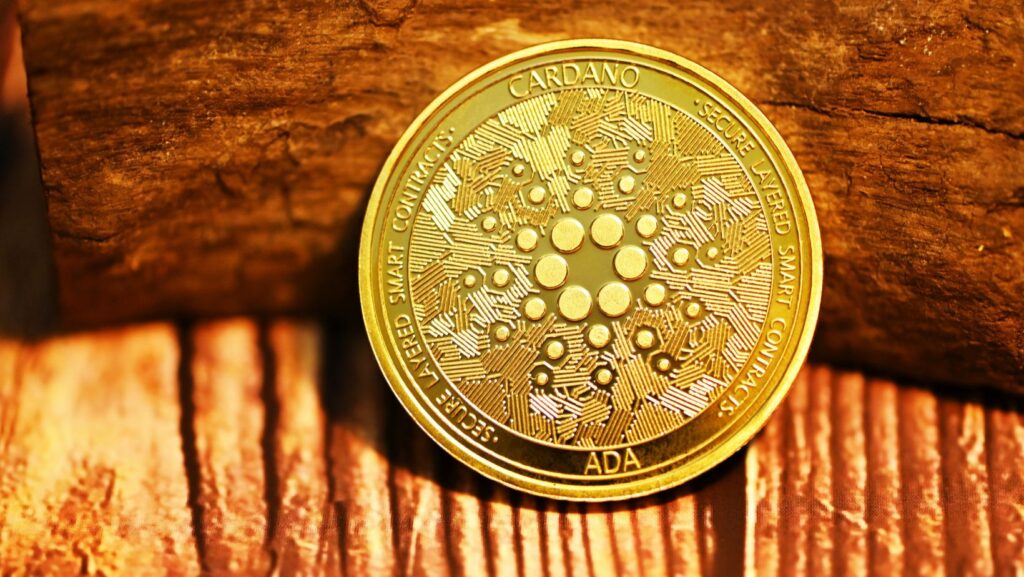Is the Cardano blockchain different? Let’s compare it with other blockchains
In the ever-expanding world of cryptocurrencies and blockchain technologies, Cardano is usually brought up in conversations alongside names like Bitcoin, Ethereum, Solana, and Binance Smart Chain. Should one believe that the blockchain and Cardano crypto are different from the rest available on the market? Does the Cardano blockchain stand out in any way from the others? Or is it simply another smart contract platform that doesn’t bring anything genuinely different to the table?
Let’s dive deep into its features, explore its unique characteristics, and compare it with some well-known names from the market.
What is Cardano?
Cardano with its native coin ADA is a decentralized proof-of-stake blockchain developed to be more efficient than proof-of-work ecosystems. It’s often brought in conversations alongside Ethereum because it has the same consensus mechanism as the largest altcoin by market capitalization and rewards users with cryptocurrencies for reviewing transactions and expanding the historical blockchain records.
Cardano is a third-generation blockchain that emerged from a scientific and peer-reviewed philosophy.
The philosophy behind Cardano
Unlike other blockchains that used hype and white papers to captivate the public’s attention, Cardano chose another path, and was built on a scientific and academic philosophy. Founded by Charles Hoskinson, one of Ethereum’s co-founders, Cardano emphasizes peer-reviewed research and evidence-based development. Its careful release of features and layered architecture are meant to eliminate mistakes common with other blockchain projects. Three key organizations spearhead Cardano’s development:
- IOHK (Input Output Hong Kong) – Responsible for engineering and development.
- Emurgo – Drives commercial adoption.
- Cardano Foundation – Focuses on regulatory integration and community support.

This trifecta created a structured, research-driven ecosystem that’s quite rare in the crypto ecosystem, known for its fast pace.
Let’s discuss technology and architecture
Cardano has a unique two-layer architecture, no other blockchain has in the sector. It consists of the Cardano Settlement Layer that handles ADA transactions and the Cardano Computational Layer that supports decentralized applications and smart contracts. Through this separation the blockchain is able to maintain heightened security and flexibility. Other altcoin blockchains like Ethereum and Solana operate on a single layer architecture which handles everything, from smart contracts to transactions. But when a blockchain runs on a single layer it’s more predisposed to congestion and high gas fees.
Cardano uses Haskell for coding and Plutus for smart contract development, two languages known for their formal verification and mathematical precisions, so it’s less prone to featuring vulnerabilities and experiencing bugs.
Comparing the consensus mechanism
As mentioned earlier Cardano’s consensus protocol is a proof-of-stake system, called Ouroboros, and it’s described as one of the most energy-efficient and secure protocols in the crypto sector. While several other projects also use it, it’s essential to note that Cardano was the first proof-of-stake system that had formal security proofs.
Let’s compare it with other consensus mechanisms:
- Bitcoin: PoW, secure but extremely energy-intensive and slow in terms of transactions per second.
- Ethereum (post-Merge): PoS, but with different staking rules and higher requirements.
- Solana: Proof of History (PoH) + PoS, which offers high throughput but has faced multiple outages.
- Binance Smart Chain: Delegated Proof of Stake (DPoS), faster but more centralized.
Ouroboros enables Cardano to process transactions without using large quantities of energy, making it a sustainable alternative to traditional PoW blockchains.
Describing smart contracts and development tools
Cardano might have launched the smart contract features later and was late to the race start, by bringing the Alonzo upgrade only in 2021, but it enables it to review the pitfalls other platforms experienced meanwhile and prevent dealing with something similar. Instead of copying Ethereum’s EVM (Ethereum Virtual Machine), Cardano created its own environment using Plutus, which offers better security but makes developer adoption more difficult, as many are already accustomed to Solidity. To solve this, Cardano is working on sidechains and tools like Marlowe (for financial contracts) and Aiken (a new smart contract language) to bridge the gap and ease development.
Making a difference in scalability and speed
Scalability has always been an issue for major blockchains, but Cardano seems not to deal with it because it uses Hydra, a layer-2 solution that enables it to scale up to 1 million transactions per second under optimal conditions. Here is how other blockchains handle scalability issues:
- Ethereum: Limited TPS, but layer-2 rollups like Arbitrum and Optimism help with scaling.
- Solana: Very high TPS (~65,000), but frequent network downtimes question reliability.
- Binance Smart Chain: Fast and cheap, but sacrifices decentralization for speed.
- Bitcoin: Around 7 TPS, highly secure but not scalable for everyday use.
Cardano’s Hydra protocol and eUTXO model (extended unspent transaction output) offer a unique and potentially more scalable method than account-based models like Ethereum’s.
Creating a new decentralization model
One of the most ambitious parts of Cardano is its on-chain governance system, Project Catalyst, that allows ADA holders to vote on funding proposals and protocol upgrades, creating a decentralized treasury model.
Other blockchains have some form of governance, but they differ:
- Ethereum: Off-chain governance led by core developers and the Ethereum Foundation.
- Solana: Validator-controlled governance, often criticized for centralization.
- BSC: Highly centralized; controlled by Binance.
- Polkadot: Strong governance features, but still evolving.
Cardano’s goal is a fully decentralized ecosystem where the community governs itself, a principle that’s not just theoretical but being implemented step-by-step.
Approaching sustainability
Cardano is one of the most eco-friendly blockchains thanks to its PoS protocol. According to estimates, Cardano’s energy use is a tiny fraction of Bitcoin’s or even Ethereum’s pre-Merge. As the world becomes more focused on sustainability, Cardano’s energy efficiency is an attractive feature for governments, NGOs, and ESG-focused investors.
Revealing real-world use cases
Cardano has focused heavily on real-world utility, especially in developing nations. Through partnerships in Africa, Cardano is building identity systems, land registration solutions, and education verification tools.
Projects include:
- Atala PRISM – Digital identity solutions in Ethiopia.
- World Mobile – Providing internet connectivity via blockchain in underserved regions.
- NFTs and DApps – Growing slowly but steadily, with platforms like JPG Store and Minswap gaining traction.
- Compared to Ethereum, which dominates DeFi and NFTs, Cardano is more focused on long-term utility and less on speculative dApps—for now.
Conclusion: Is Cardano Really Different?
Yes, Cardano is different.
From its academic foundation to its layered architecture, energy-efficient consensus, and long-term vision for decentralized governance, Cardano stands apart from the crowd. It may not move as fast or attract as many speculative projects as Solana or Ethereum, but its approach emphasizes resilience, sustainability, and real-world impact.



